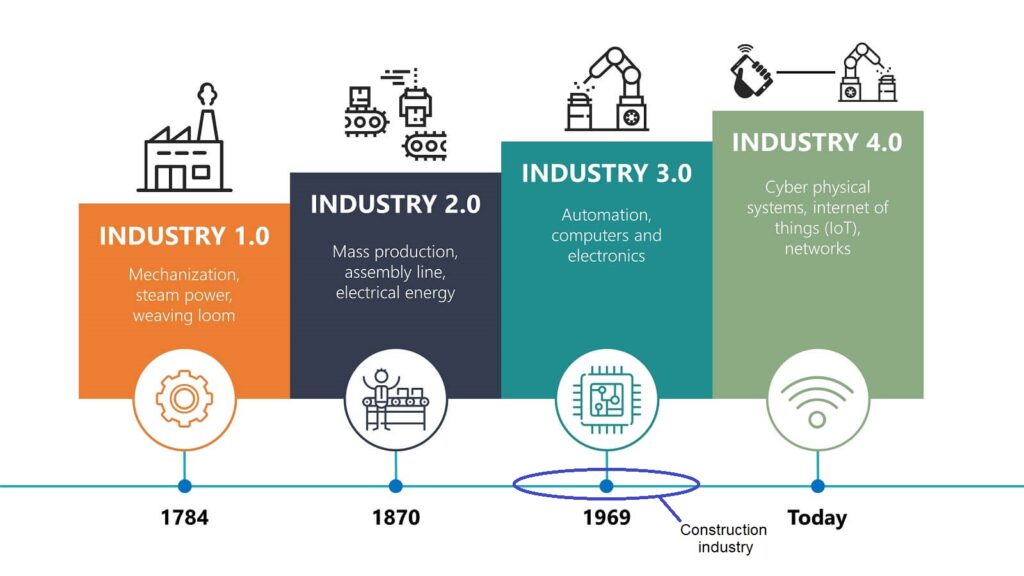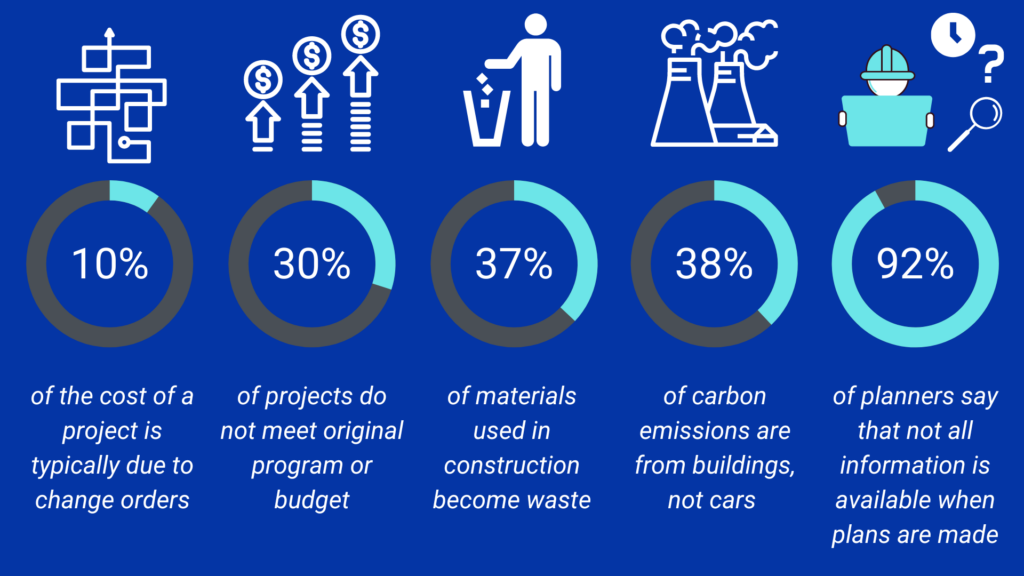The place of BIM in the construction industry
Why do we use BIM? The history and reasons why the AEC world needs to change
We analyze the building sector path until today, comparing the way we used to do things and how we do them now. Are we on an evolutionary path? Is digitalization on the way up? Why BIM can be a good (or bad) fit for the AEC sector? These questions we aim to clarify here, happy reading!
The construction industry still plays some roles and develops activities like last century. Some construction sites look almost the same, with so much labor work on site and decisions made on the spot. The need for change and innovation is clear and better planning will lead to smoother executions on-site, less re-work, and higher coordination.

With today’s technical tools, information is easily accessible anywhere. It has enabled communication and collaboration in all areas of life and business, and building and construction should not be different. The current data quality and flow in this field are inadequate for today’s needs. And here is precisely where BIM comes into play.
The state of the industry before BIM
The construction sector is clearly behind the industrial revolutions. BIM is the methodology that will help it reach and thrive in the industry 4.0 or 4th revolution, making the internet of things (IoT) and IT participative, available resources and solutions present in the building field.
The construction industry has almost made a tradition of lagging in productivity improvement. Several reports show that its yearly increase is way behind other sectors; globally, the industry has recorded average annual productivity growth of 1 percent since 1995. During the same period, the global economy grew on average by 2.8 percent.

A lack of technical expertise, high software costs, and incomplete BIM data on the products are used to hold BIM for implementation.
The construction industry is behind the economic growth of the market.
A survey carried out by the Construction Management Association of America (CMAA) displayed the main challenges of the construction industry. It draws the attention that more than 90% of the planners stated that there is missing information on the building project. Here is where BIM can help standardize documentation management and interoperability between parties.The over cost derivate from on-site changes and exceeding scheduled budgets significantly impact the overall expenses. Also, the emissions and waste problems can be avoided by better planning, something that BIM will provide to the project and team.
On top of those challenges, the users also pointed to poor quality design documents and a lack of true innovation and new ideas as the industry’s most urgent challenges.
The European working group called “EU BIM Task Group” stated in one of its studies that until 2025 savings from 15 to 25 percent can only be possible by applying BIM. It proves the enormous potential that both, the public and private sectors, can benefit from the BIM implementation in the construction industry.

The construction industry is notorious for its reluctance to embrace digitalization, lagging behind other sectors in terms of technology adoption. While other industries such as manufacturing, retail, and finance have already undergone significant digital transformation, the construction industry remains largely paper-based and manual. The lack of digitalization in construction has significant consequences for the industry, including decreased productivity, increased costs, and delays. Without digital tools, construction professionals struggle to collaborate effectively, manage projects efficiently, and monitor progress in real-time. This can lead to errors, rework, and cost overruns, resulting in delayed project completion and dissatisfied clients.
However, there is hope for change through the adoption of Building Information Modelling (BIM) and other new technologies. BIM is a digital model-based approach that enables collaboration, coordination, and communication across the entire project team. It allows for real-time data sharing, which facilitates better decision-making, reduces errors, and improves overall project efficiency. BIM can also help identify and resolve potential issues before they become costly problems, ensuring that projects are delivered on time and on budget.
Read more: 9 key trends in the construction industry
In addition to BIM, other technologies such as drones, robots, and virtual reality can also help transform the construction industry into a 4.0 industry. These tools can improve safety, productivity, and accuracy, while reducing costs and the need for manual labor. For example, drones can be used for site inspection and monitoring, robots can be used for repetitive tasks, and virtual reality can be used for training and visualization.
In conclusion, the lack of digitalization in the construction industry has significant consequences, but the adoption of BIM and new technologies can help transform the industry into a 4.0 industry. By embracing digital tools, construction professionals can collaborate more effectively, manage projects more efficiently, and deliver better results for clients. The infrastructure sector now has a short time to make up for what it has neglected for years; smart buildings, climate change -the construction industry generates many emissions and consumes so many raw materials- and cost and time deadlines missed are the main challenges faced by the industry that a BIM adoption can help.
Author: Enrique Nadales Clavero, Tequma & TylkoAdvisors

Comments are closed.